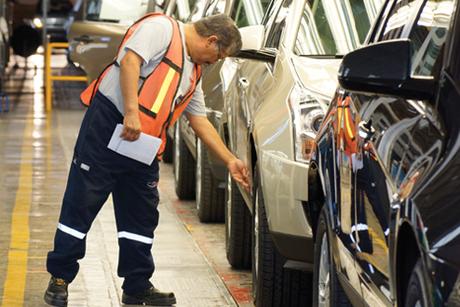 Logistics can be defined as the right part or SKU, in the right quantity, in the right place, at the right time. But what makes it "world class?"
Logistics can be defined as the right part or SKU, in the right quantity, in the right place, at the right time. But what makes it "world class?"
Is it an above 90% logistics efficiency? Or a certain cost? Is it a 99% on time delivery? Or a combination of all of these benchmarks and more?
The truth is, the definition of "world class" is constantly changing. Look at the automotive supply chain. There are so many variables that change constantly. What constitutes as "world class" today, might not be "world class" next week, month, quarter, or year.
"World class" logistics requires planning, yet you have to be flexible. It requires visibility, as well as the ability to collect and analyze data to find faster and cheaper ways to move product. You have to be innovative and constantly moving through the journey.
There are several challenges you may face while making your supply chain "world class." But finding the solution to these challenges makes all the difference. Here are a few examples of challenges we have seen and the solutions developed to overcome them:
Challenge: There is a lack of centralized part and packaging data making it difficult to build loads and maximize cube.
Solution: Spend the time needed to collect good data. Actively engage both suppliers and customer resources for part/packaging information. Having the right data leads to a strong plan for every part.
Challenge: There is a lack of door-to-door visibility because multiple providers run different portions of your transportation. You have limited visibility to loads in-transit in Mexico, and have no visibility to loads at US/Mexico points of consolidation.
Solution: Integration of multiple GPS providers with a third-party logistics (3PL) transportation management system. You can also outsource to an experienced 3PL to take on the role of border manager, coordinating the efforts of all stakeholders.
Challenge: Prioritizing critical inventory has become difficult because of the use of multiple providers during transit and limited bridge hours.
Solution: Partner with a 3PL to act as the end-to-end border manager contracting or performing border crossings and dedicated dray services directly.
Challenge: Your loads are delayed for several hours at the border.
Solution: Work with a 3PL that is familiar with US/Mexico rules for imports and exports. The right 3PL can ensure your carriers are C-TPAT, FAST and NEEC certified, ready documentation, establish schedules, and monitor the physical flow of freight.
There are numerous other challenges in establishing world class logistics. And as the industry changes, many new challenges will arise. However, by partnering with a 3PL, OEMs and suppliers are overcoming these challenges and achieving a "world class" operation.
Authored by Darcee ScavoneDarcee is Vice President and General Manager of Automotive, Aerospace, and Industrial Supply Chain Operations at Ryder. Ms. Scavone joined Ryder in 2005 and most recently served as VP and Chief Financial Officer for the Supply Chain Solutions segment. She has over 25 years of corporate and divisional finance experience with special emphasis on operations analysis, business development, and commercial strategy. In addition to chairing the Michigan hub of Ryder's Women's Leadership Forum, Ms. Scavone is an active mentor and women's advocate, as well as a past member of Ryder's Diversity and Inclusion Council. In 2012, she was named to the Profiles in Diversity Journal's "Women Worth Watching" list. She was recently named one of the 2016 "Pros to Know" by Supply & Demand Chain Executive Magazine. A trusted expert in the industry, Ms. Scavone has been a featured presenter at Auto Logistics Mexico Conference & Auto Logistics Global Conference, Heavy Duty Manufacturers Association and in in Material Handling & Logistics Magazine.

